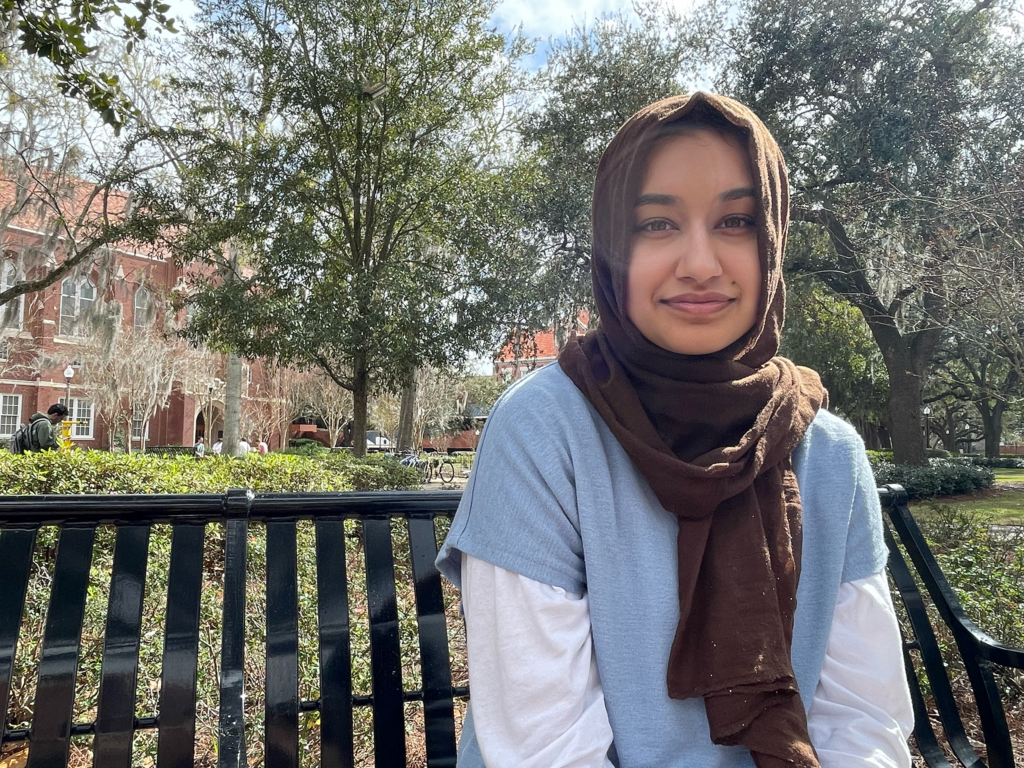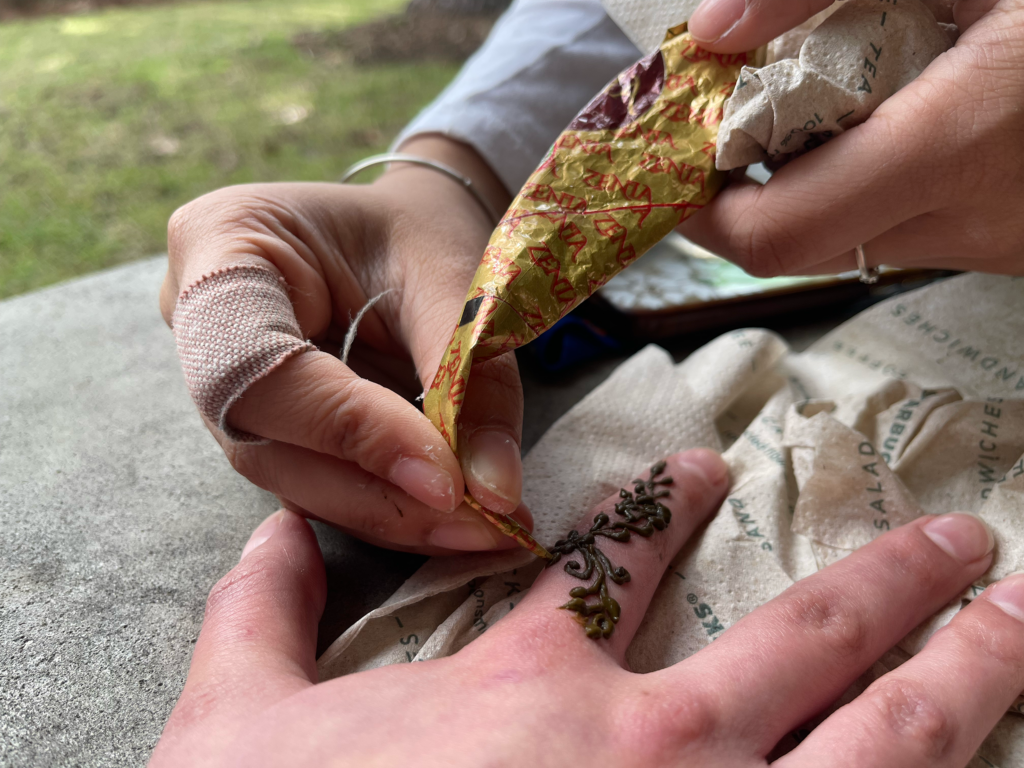Henna artist

Syeda Hasani, a self-taught henna artist and vice president of student group Hearts for Henna, poses at the Plaza of the Americas.
April 25, 2023 | Compilation and photos by Mariana Pena Rueda
“Since I was a kid, I was always into arts and crafts. I always looked forward to arts class and doing DIYs. I would tell my mom ‘Can you get this?’ for me to DIY.
I was the kid who would do it all. But I never liked henna.
I tried it once when I was 15, and it turned out horrible. My first design was a circle with flowers and little patterns I did for my mom. I tried to do the fingers, but it was not symmetrical, even at all. I didn’t like it.
I said, ‘I’m never going to try this again.’ But, three years later, I did.

Hasani does a henna design in Turlington Plaza as part of a fundraising event for the organization Hearts for Henna.
My senior year of high school, that’s when I started doing it. I started practicing on family members and some friends.
I’m originally from Pakistan, and henna has been a big part of my culture — in religious events, in parties, in weddings. Often, brides hide the groom’s name or initials within the designs and if he finds it, it signifies they’re going to have an everlasting love.
Henna brings joy. It’s peace.
People say henna tattoo, which is like saying chai tea. It’s repetitive. Henna is a stain on the skin. Once it’s removed, if it’s left for long, it gets darker and darker.
I don’t like henna. It has like an earthy smell to it, which I don’t enjoy. I like doing it on other people. It brings them joy, which makes me happy.
I’m particular about things. I’m really a picky eater too. I didn’t like a lot of vegetables growing up. But then as I got older, I was like, ‘This actually tastes good.’
What was I afraid back then? I was afraid of henna. The designs are hard. People are always amazed by the intricacy. There’s a lot of details.
I like minimal design and look for small details. I’m inspired by flowers and leaves and nature. Just beauty.
When I’m having a creative block, I just need somewhere to put my creativity. The liquid moves. It glides while I’m letting my creative freedom go.
When I’m calm, I can see myself going easily. But when I’m nervous, I see shakiness. The lines are not straight.

Hasani holds the henna paste she uses to complete her designs. Detail by detail, she glides the henna into flowers, leaves and curves. The process takes less than ten minutes.
Like in modern architecture, not a lot of things are symmetrical. We look for symmetry in places, but mainly we look for balance. If you understand symmetry, I think you can break that rule and understand how to make something beautiful that’s not symmetrical. You can do whatever you want.
It’s kind of stressful because you want it perfect. So, that’s a little contradicting.
Still, with any skills you have to practice. I still have to.”